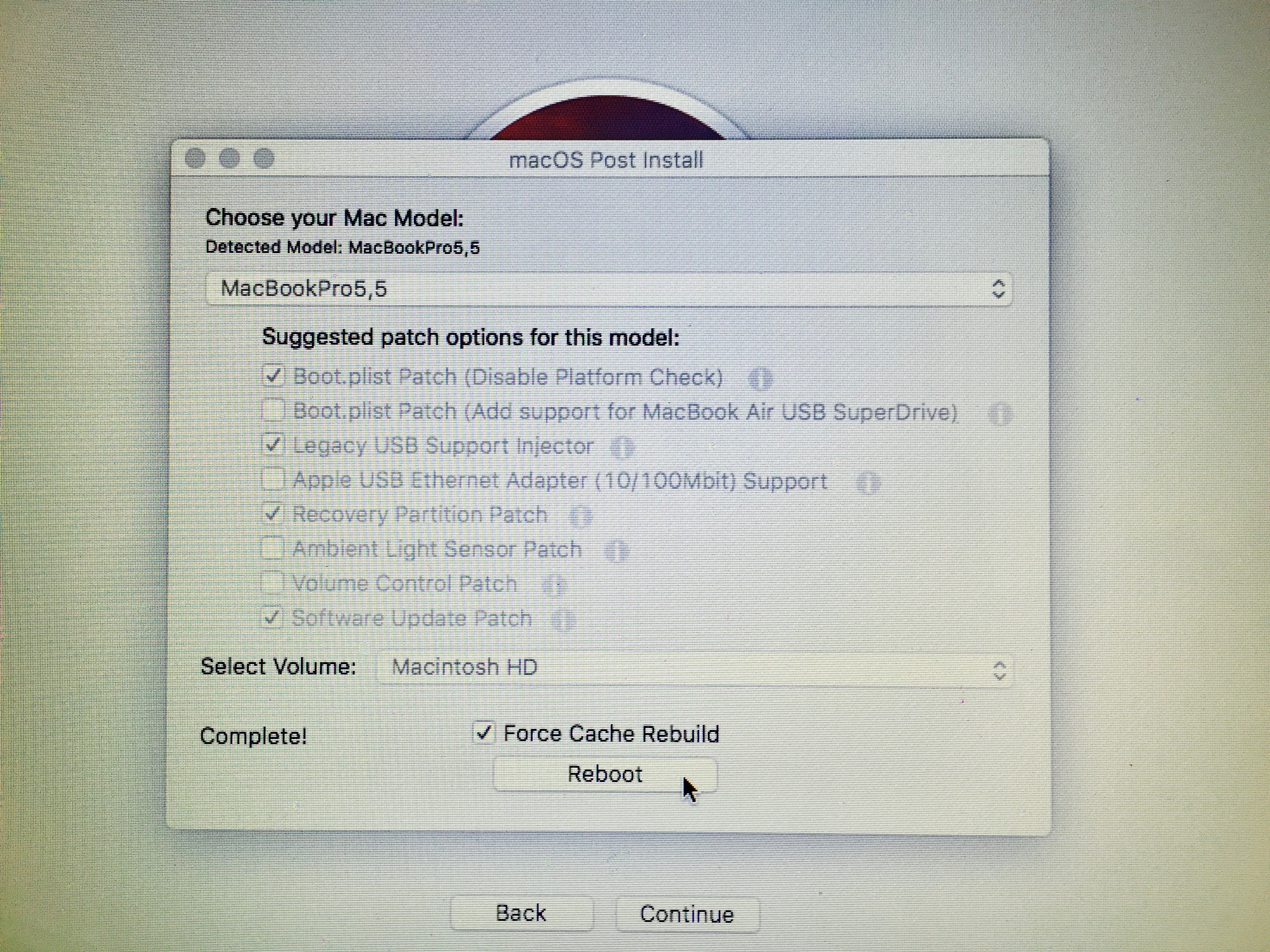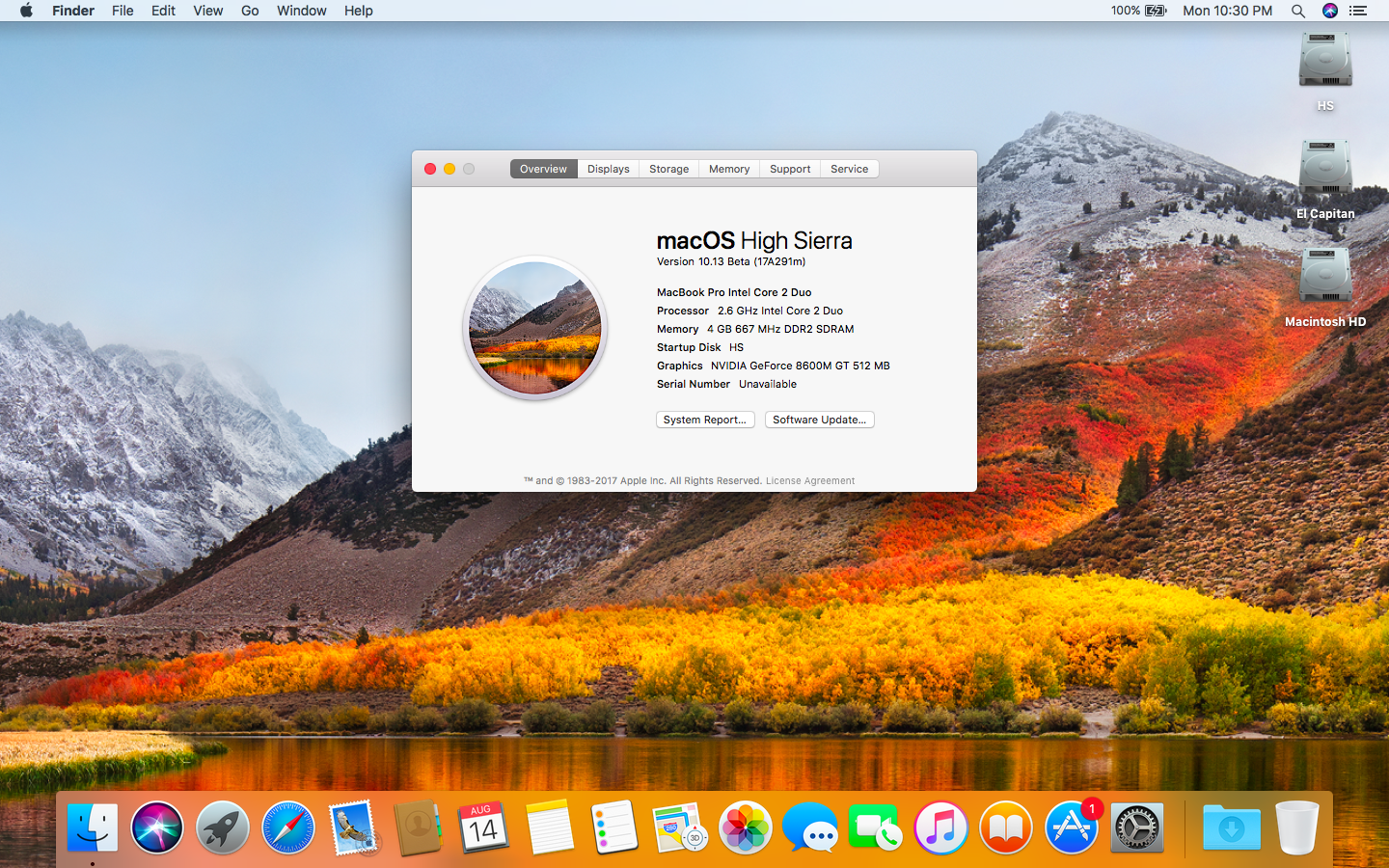

- Mac os sierra for early 2008 how to#
- Mac os sierra for early 2008 mac os x#
- Mac os sierra for early 2008 mac os#
- Mac os sierra for early 2008 upgrade#
- Mac os sierra for early 2008 pro#
This change leaves the following models out in the cold for MacOS Sierra:įor more, see our complete coverage of WWDC 2016, learn how to sign up for the iOS 10, MacOS Sierra public betas, and which iPhones and iPad will and won't work with iOS 10. MacBook - late 2008 aluminum/early 2009 and later.
Mac os sierra for early 2008 mac os#
In addition to changing the name of its Mac operating system, Apple dropped support for a number of Macs, the first time it has adjusted the hardware requirements for a Mac OS release since 2012 with OS X 10.8 Mountain Lion.Īccording to a slide at the end of Craig Federighi's MacOS presentation at the WWDC keynote, the following models will support MacOS Sierra:įrom OS X 10.8 Mountain Lion to OS X 10.11 El Capitan, Apple's hardware requirements were: 3) Download a copy of macOS Sierra 10.12. Related tutorial: How to use Disk Utility to format drives on your Mac. Guide includes OS X 10.8.x to macOS 11.0.x. 2) Format it as GUID Partition Map, Mac OS Extended (Journaled) using the Disk Utility application. Easily check which versions of mac OS, iOS, iPadOS, or watchOS are compatible with your Mac model or iDevice. 1) Find yourself an 8GB or larger USB drive or external hard drive partition.
Mac os sierra for early 2008 mac os x#
In any case - start with CleanMyMac 3 to be ready for El Capitan.Apple rebranded Mac OS X as MacOS on Monday at the company's annual Worldwide Developers Conference. Instructions to install macOS Sierra on older Macs. Try these mentioned steps and enjoy your quick Mac with OS X El Capitan on it. If you don't feel like waiting, click the arrow clock icon next to the Date & Time at the top-right of the menu bar and select "Back Up Now."

Plus, it's just good practice to back it up every so often, you know, just in case. Why? You never know what will happen when upgrading your operating system. If you have OS X version 10.8, download the previous version, CleanMyMac Classic.Īnd now that your Mac is clean, you should definitely back it up. Get CleanMyMac 3 now and run a scan to see how much junk you can clean up. It cleans out:īesides cleaning, it speeds up your Mac with maintenance scripts and keeps hardware safe with Health Monitors. The easiest (and fastest) way to get yourself a cleaner Mac is by running a scan with CleanMyMac 3. You’ll need the following: OS X 10.9 or later 4GB of memory 35.5GB available storage on macOS Sierra or later Some features require an Apple ID terms apply.
Mac os sierra for early 2008 upgrade#
If your Mac is running OS X Mavericks 10.9 or later, you can upgrade directly to macOS Big Sur. A copy of the macOS Sierra Installer App.
Mac os sierra for early 2008 pro#
So to begin with, let's take a look at cleaning up a few things. Before you upgrade, we recommend that you back up your Mac. Early-2008 or newer Mac Pro, iMac, or MacBook Pro (MacPro 3,1 and 4,1. In front of the multi-colored bar, you will see the phrase, "X.XX GB free out of XX.XX GB." If you don't have at least 15 GB of free space, look into cleaning your Mac with cleanup tool, like CleanMyMac 3.Ī fresh OS X needs a fresh Mac. If you have less than 4 GB RAM, you'll have to look into upgrading your RAM.ĭisk Space: 15 GB to 20 GB of free space on drive In the same menu you have the "Memory" tab. Next, select your USB drive in the Target Volume list, and click 'Start Operation.' 4. Ensure that the tool successfully verifies the app. Open the 'macOS High Sierra Patcher' tool, and browse for your copy of the macOS High Sierra Installer App. Also, Apple notes that Metal is only available on "all Macs since 2012". Insert your desired USB drive, open Disk Utility, and format it as OS X Extended (Journaled). If you're running a version of OS X older than 10.8, look into upgrading your OS X. The number underneath "OS X" is your version number.


 0 kommentar(er)
0 kommentar(er)
